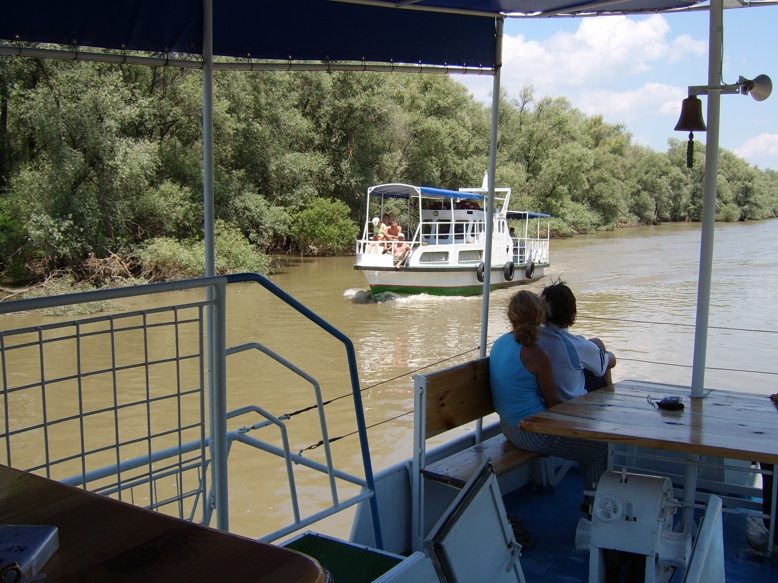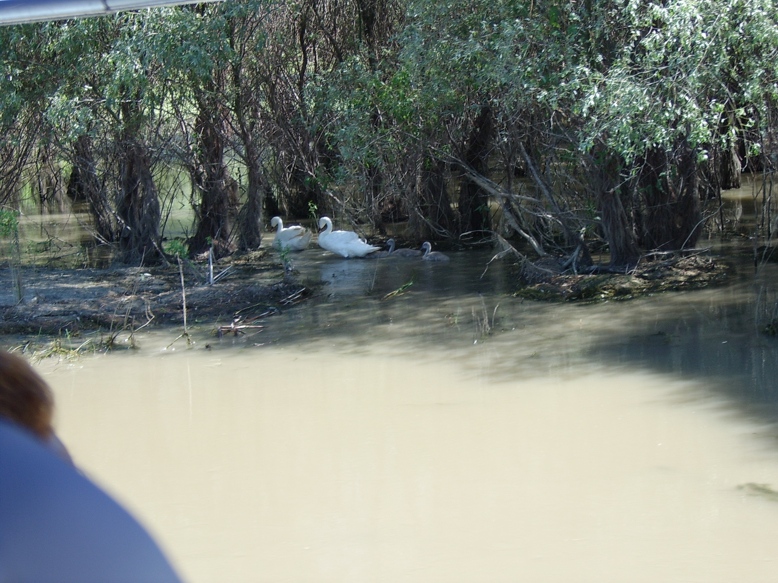
 |
15.09 – 17.09.2006
The price includes :
· 1 night accommodation in 2* hotel ( air conditioned , TV )
· 2 excursions by boat in Delta
· 2 lunches on the boat
· Traditional fish dinner with folklore program
· 1 continental breakfast
The mighty Danube river flows 1,788 miles (2,870 km.) from its beginning in Germany's Black Forest to the Black Sea. Just before reaching the sea, however, the river divides into three main branches (named Chilia, Sulina and Sfintu Gheorghe after their respective ports) and a network of channels, lakes and brooks creating a magnificent wetland and wildlife sanctuary. Floating reed islands, tropical woods, pastures, sand dunes and waterways cover nearly 3,000 square miles (5,165 sq.km.) and shelter over 300 species of birds, countless fish and 1,150 kinds of plants. UNESCO has designated the Delta as a "Reservation of the Biosphere.
http://www.danubedelta.ro/imagini.asp
The Danube Delta, a buffering interface between the Danube river catchment (805, 300 sq. km and the Western Black Sea (5,165 sq. km) is a unique place not only in Europe, but also among other deltaic ecosystems due to its high biodiversity, to its renewable natural resources and to its beautiful scenery doubled by its cultural sites remnants and worth. The Danube Delta is a large scientific laboratory for a whole range of research-workers and explorers, whether ecologists, biologists, botanists, zoologists, ornithologists, geologists, geographers etc. as it is singles out by being:
· the youngest land in Europe (it grows larger by 40 m of land every year);
· the second largest delta in Europe (Volga is the first) and the 23rd in the world;
· the third in ecological significance among the 300 reserves of the world;
· a highly productive area generating a large range of biological resources;
· one of the largest and most compact reed areas in the world (240,000 ha);
· a place with the richest ornithological fauna in the world (over 250 species);
· a combination of natural and man-made ecosystems and ecotones, i.e. fresh water, sea water, terrestrial ecotones, running and stagnant waters, marshes, easily flooded zones, river levees, maritime levees, reclamation zones for agriculture, pisciculture, forestry etc.. In the Danube Delta there are islands of old forests with subtropical species of vegetation rare for this part of the world placed between 45 degrees latitude north and 29 degrees longitude east, at half-distance between the Equator and the North Pole;
· the most important wetland area in South Eastern Europe, with a significant role to the regional and global water cycle;
· an area of highest diversity with insects, birds and fishes and a crossroads for migratory birds;
· a place where globally endangered and therefore rare species of birds are to be found, like Dalmatian pelicans, pygmy cormorants, red-breasted geese, or the Pelecanus crispus, the Pelecanus onocratslus, Egretta alba, Egretta garzeta.
· a zone of fisheries covering some 90 species of fresh, brackish and salt water fishes, whether sedentary or migratory, among which rare species like the Acipenseriadae;
one of the fewest places in the world which shelter mammals like Mustella lutreola and the otter (Lutra lutra).
 |
 |